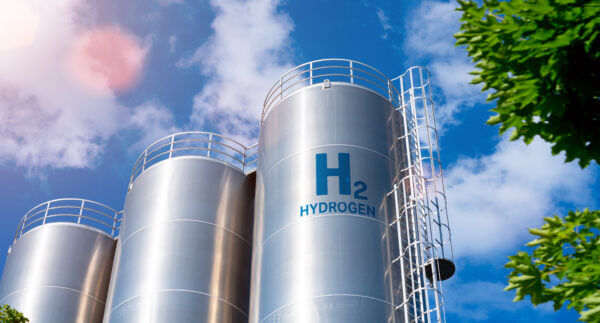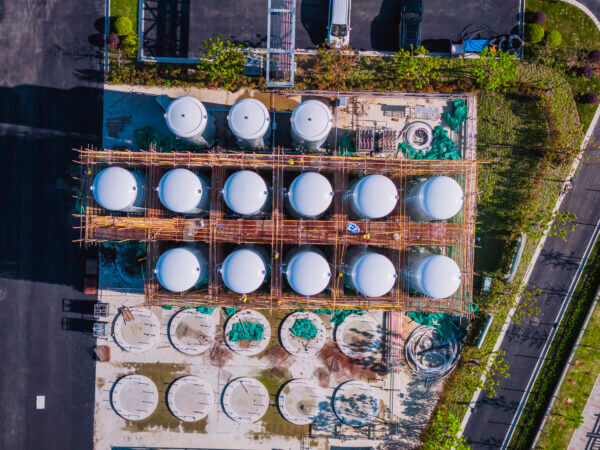HYDROGEN HUBS
Implementing climate and community beneficial clean hydrogen hubs
A hydrogen hub is a regional network consisting of the production, end-use, and connective infrastructure needed to produce, transport, store, and use clean hydrogen in a functional regional market.
These potentially large demonstration projects are intended to test and prove out the technologies needed to minimize the greenhouse gas emissions intensity of hydrogen production, to use it in new applications to aid decarbonization, and to store and transport it in new ways to meet the demands of a newly formed national hydrogen market.

U.S. Hydrogen Hubs
CATF’s Zero-Carbon Fuels team works alongside hub developers, community organizations, policymakers, and DOE to ensure these hubs maximize climate and community benefits. Hubs that maximize climate and community benefits have the following characteristics:
1. Low-carbon production
The hubs program will support hubs with a variety of production pathways ranging from renewables to natural gas to nuclear energy. The upstream emissions from producing the natural gas and/or electricity used to make hydrogen must be absolutely minimized.
H2 Hubs should produce hydrogen that has a carbon intensity below 4kgCO2e/kgH2 in alignment with the Clean Hydrogen Production Standard and accounting for full upstream emissions in the Lifecycle Assessment (LCA).
2. End-uses for maximum climate benefit
The hubs program is required to demo H2 in a variety of end uses, but not all end uses for hydrogen are equal in their climate impact. H2 Hubs should prioritize end uses that require hydrogen to decarbonize.
Priority 1: Crude oil refining, petrochemicals production, ammonia production, methanol production, steel and iron production.
Priority 2: Renewable fuels production, sustainable aviation fuels, marine shipping fuel, heavy duty trucking fuel.
3. Maximizing community benefit
H2 Hubs should:
- Engage communities during the project design process prior to decision-making and give communities clear opportunities to influence key project decisions.
- Empower and allow impacted communities to determine the local benefits that hubs are working to create as part of their Community Benefits Plans.
- Ensure that hubs are developed sagely and that all project risks are absolutely minimized.
Appalachian Regional Clean Hydrogen Hub (ARCH2)
States: Pennsylvania, West Virginia, Ohio, Kentucky (economic impacts only)
Prime Applicant: Battelle
CATF Lead: Sam Bailey
Alliance for Renewable Clean Hydrogen Energy Systems (ARCHES)
State: California
Prime Applicant: Governor’s Office of Business and Economic Development (Go-Biz)
CATF Lead: Maggie Field
Heartland Hydrogen Hub
States: Minnesota, Montana, North Dakota, South Dakota, Wisconsin
Prime Applicant: University of North Dakota’s Energy and Environmental Research Center
CATF Lead: Ian Champ
HyVelocity Hub
States: Texas (and potentially Louisiana)
Prime Applicant: GTI Energy and Center for Houston’s Future
CATF Lead: Matthew Holland
Mid-Atlantic Clean Hydrogen Hub (MACH2)
States: Pennsylvania, Delaware, New Jersey
Prime Applicant: Mid-Atlantic Clean Hydrogen Hub
CATF Lead: Sam Bailey
Midwest Alliance for Clean Hydrogen (MachH2)
States: Illinois, Indiana, Michigan, Kentucky, Missouri, Ohio, Wisconsin
Prime Applicant: Constellation
CATF Lead: Ian Champ
Pacific Northwest Clean Hydrogen Hub (PNW H2 Hub)
States: Washington, Oregon, Montana
Prime Applicant: The Pacific Northwest Hydrogen Association
CATF Lead: Maggie Field
DOE’s Regional Clean Hydrogen Hub’s program is currently in the Award Negotiation phase, which is expected to last through early 2024. We will update this timeline as the program progresses.
Pre-application process 2022-2024

Implementation timeline

Estados Unidos Mapa de los nudos de hidrógeno
The U.S. Department of Energy’s (DOE) Regional Clean Hydrogen Hubs program is intended to catalyze the clean hydrogen economy. DOE’s Office of Clean Energy Demonstrations was allocated $8 billion by the Infrastructure Investment Jobs Act to fund demonstration-scale regional clean hydrogen hubs across the United States.
Over 30 applicants submitted full proposals to the Department of Energy’s Regional Clean Hydrogen Hub’s Program. CATF has tracked all publicly identifiable efforts, including details about production methods and end-use sectors on an interactive map.
Click here to view a full screen version of this map.
The latest on hydrogen hubs
Meet our experts working
on hydrogen hubs
-

Sam Bailey
Director de los centros regionales de los Apalaches -

Ian Champ
Director de los Centros Regionales, Medio Oeste -

Maggie Field
Director de centros regionales, Oeste -

Hagan Han
Senior Policy Associate, Zero-Carbon Fuels -

Matthew Holland
Director de los Centros Regionales, Costa del Golfo -

Emily Kent
Estados Unidos Director, Combustibles Cero Carbono -

Rachel Starr
Estados Unidos Director de Política, Combustibles Cero Carbono y Descarbonización del Transporte



























